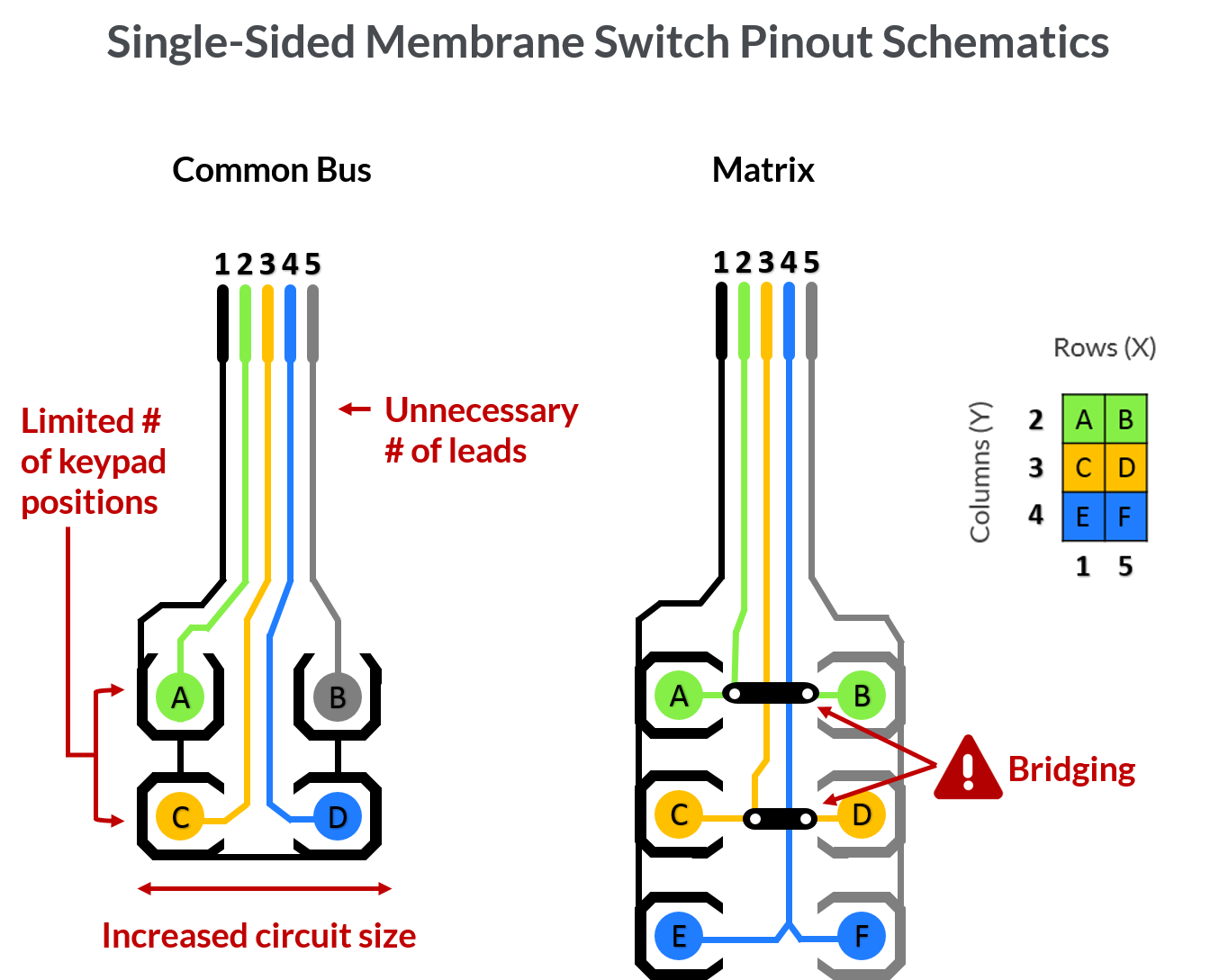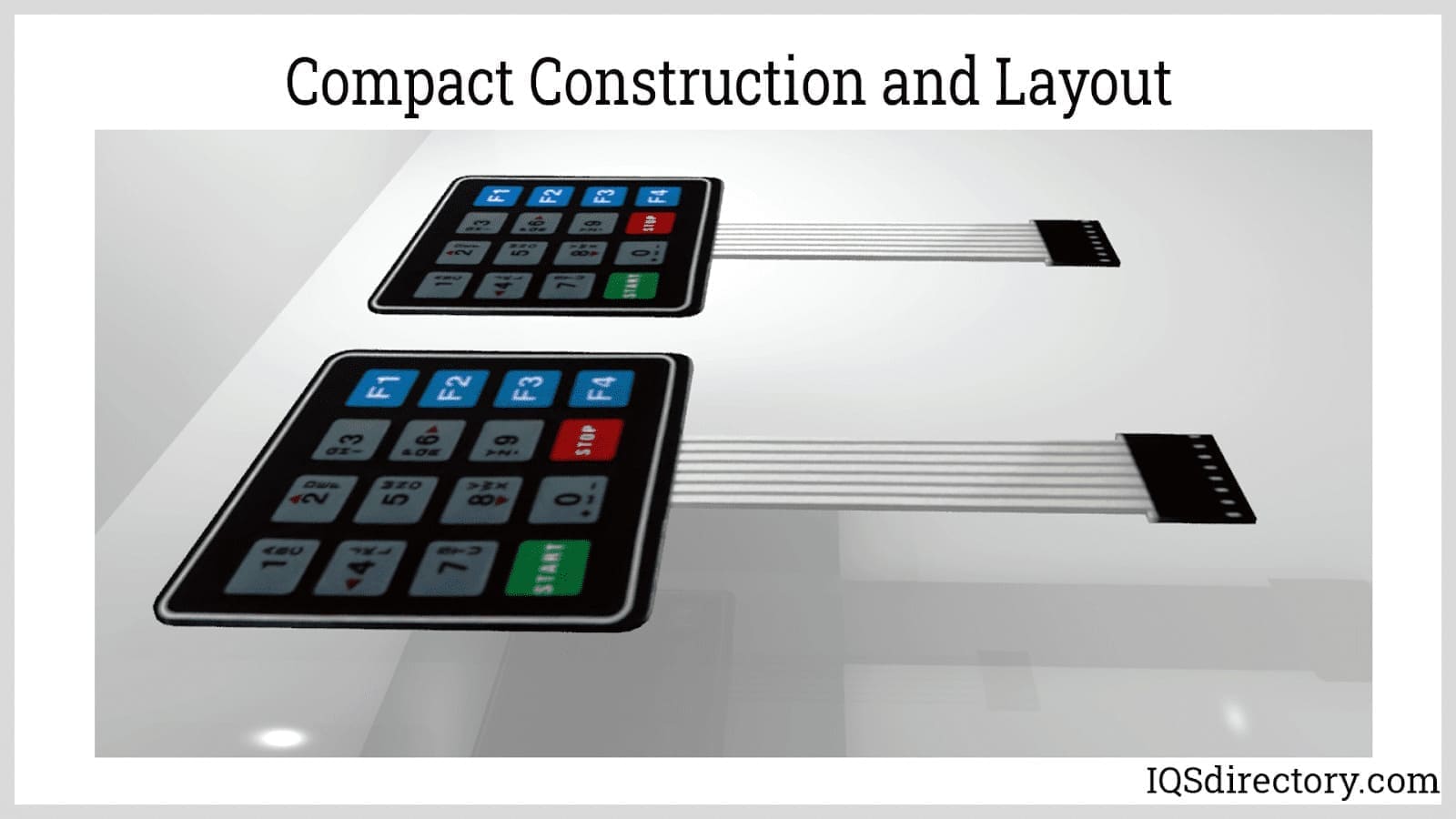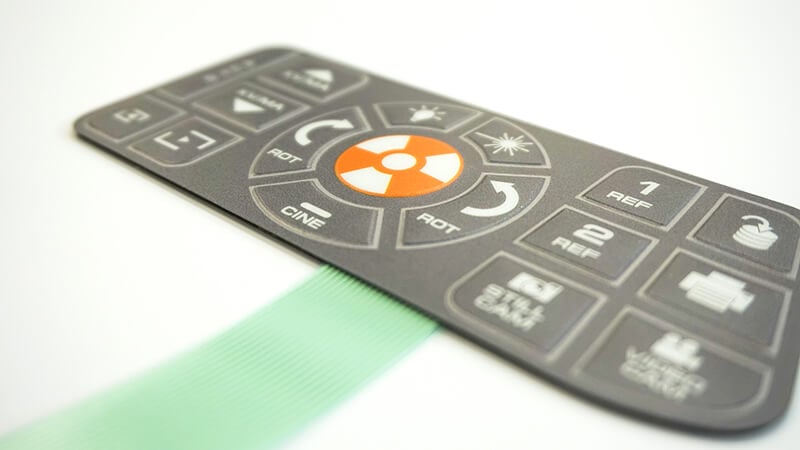Crucial Attributes to Seek When Picking a Membrane Switch
Crucial Attributes to Seek When Picking a Membrane Switch
Blog Article
Recognizing the Functionality of Membrane Layer Changes for Interface Gadget
The capability of membrane switches stands for a considerable development in interface layout, integrating efficiency with visual adaptability. These switches run with a multi-layered structure that converts individual interactions right into electrical signals, allowing for both small layouts and strength against ecological aspects. As industries significantly prioritize customer experience, recognizing the subtleties of membrane switch modern technology ends up being essential. What effects do these developments hold for future applications, and just how might they redefine user communications across various gadgets?
What Are Membrane Switches?
Membrane layer buttons are innovative interface devices that help with individual communication with digital tools. These versatile components include multiple layers, including a graphic overlay, spacer, and a printed circuit layer. The design permits a smooth assimilation right into different electronic devices, boosting both the visual and functional facets of customer interfaces.
Membrane layer buttons are commonly employed in a wide variety of applications, from home devices to industrial machinery and medical devices. Their building usually features a thin profile, making them an ideal choice for portable styles. The tactile feedback provided by these switches can be engineered to meet specific customer choices, making sure efficient communication between the customer and the gadget.
Toughness is one more significant advantage of membrane buttons, as they are resistant to dust, dampness, and chemicals, which improves their life-span sought after environments. In addition, these switches can be customized in regards to form, size, and visuals design, permitting for branding and user-specific attributes. In general, membrane layer changes represent a sensible service for enhancing individual experience in electronic tools, combining capability with aesthetic allure in an effective fashion.
Exactly How Membrane Layer Changes Job
Operating on a simple principle, membrane switches over use a split building to sign up user input successfully. Each switch contains numerous layers, including a published circuit layer, a spacer layer, and a top graphic layer, which are made to work with each other seamlessly. When an individual presses the leading layer, it compresses the spacer layer, bringing the conductive aspects of the circuit layer right into contact with each other.
This call creates a shut circuit, signaling the gadget to implement a particular feature. The layout permits different configurations, including responsive feedback, which can improve the customer experience by providing a physical feeling upon activation. The products made use of in membrane switches frequently include adaptable substrates, such as polyester or polycarbonate, which guarantee longevity and resilience against deterioration.

Secret Advantages of Membrane Switches

An additional substantial advantage is their compactness. Membrane layer switches are slim and light-weight, which enables manufacturers to conserve area in their devices without giving up performance. This feature is especially useful in applications where weight and volume are important considerations.
In addition, membrane buttons are resistant to dirt, wetness, and chemicals, enhancing their toughness. This resilience expands their life expectancy and lowers the requirement for constant replacements, causing expense financial savings in time.
Moreover, the tactile responses offered by membrane layer switches can be optimized to enhance individual communication. They can include attributes such as raised buttons or distinct clicks, improving functionality and customer experience.
Applications Across Industries
Individual interface tools making use of membrane layer buttons are common in a broad array of sectors, showcasing their adaptability and performance. Membrane Switch. In the clinical sector, membrane buttons are integral to devices such as diagnostic tools and patient monitoring systems, where their durability find out this here and ease of cleaning are vital for keeping hygiene standards. In the auto sector, these buttons are used in control panel controls and infomercial systems, providing a sleek and modern interface for individuals.
Additionally, the customer electronic devices field advantages from membrane layer buttons in go to website devices and portable tools, where portable layout and straightforward user interfaces boost individual experience. Industrial applications likewise take advantage of membrane switches for control panels in machinery and automation systems, highlighting their toughness and resistance to rough settings.
In the aerospace and protection markets, membrane layer buttons are used in cabin controls and devices, where dependability and performance under extreme problems are paramount. Additionally, the video gaming industry increasingly includes membrane layer switches in controllers and game machines, adding to an appealing user experience. In general, the flexibility of membrane switches allows their prevalent use throughout various sectors, emphasizing their relevance in modern-day customer interface style.
Future Patterns in Membrane Switch Modern Technology

Additionally, the use of innovative materials, such as polycarbonate and polyester films, is anticipated to climb, providing improved durability and resistance to environmental stress factors. These products add to the overall click here for more longevity of membrane switches, making them appropriate for harsher commercial applications.
Moreover, the unification of clever technology, including IoT connectivity, will allow membrane layer buttons to connect with various other tools and systems, facilitating a more interactive individual experience. This pattern lines up with the growing demand for wise gadgets across different markets, from health care to customer electronics.
Finally, personalization choices are prepared for to increase, permitting manufacturers to create bespoke solutions tailored to specific customer demands and choices. These developments will place membrane layer buttons as important parts in the advancement of individual interface innovation.
Conclusion
In conclusion, membrane layer switches over represent a pivotal development in interface modern technology, supplying a trusted and flexible remedy for varied electronic applications. Their split building and construction assists in small layout, while attributes such as tactile feedback enhance customer communication. The longevity against environmental aspects further strengthens their utility across numerous industries. As developments in product scientific research and touch noticing modern technologies proceed, the functionality and applicability of membrane layer switches are anticipated to increase, enhancing their importance in modern-day electronic tools.
Report this page